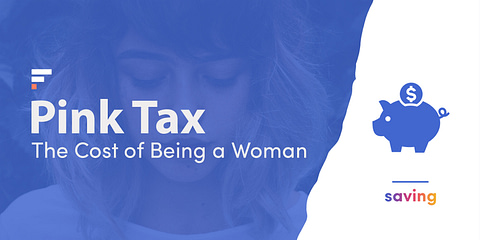Mastering how to negotiate a medical bill can be a financial lifesaver in today’s healthcare system. Despite the Affordable Care Act, many are still burdened by high medical costs.
Remember: If insurance companies can negotiate with healthcare providers to reduce medical bills, then so can you! This guide offers practical steps on how to do it so you can effectively reduce your healthcare expenses.
📚 In this post:
- Study Your Insurance Policy
- Negotiate Before Receiving Care
- Look for Discount and Assistance Programs
- Get Help From a Third Party Organization
- Ask for an Itemized Bill and Check Every Line
- Negotiate a One-time Settlement or Payment Plan
- Consider a Patient Advocate
- If All Else Fails, Consider Bankruptcy
1. Study Your Insurance Policy
As the old saying goes, failing to plan is planning to fail. Before you can engage in a negotiation over the cost of your medical care, you have to understand the ins and outs of your insurance policy (if you have one).
Make sure you understand your deductible, maximum out-of-pocket costs, and coinsurance ratios. Figure out which services are covered, what your copays for them can be, and which providers are in your network.
Be prepared to call out your insurance provider for failing to uphold their commitments. It’s a sad fact of life that they’ll generally do their best to pay as little as possible, so you may have to put pressure on them to make sure that they pitch in as they’re supposed to. Remember that you can appeal an insurer’s decision and ask for an outside review.
☝️ The best time to learn about your insurance policy is before you need it. When someone’s sick or injured, you’re under pressure and not in any condition to dig into the details of insurance. Study your policy as soon as you get it.
2. Negotiate Before Receiving Care, If Possible
Whenever possible, try to reduce the cost of your healthcare before you receive any services. It’s easier to find cheaper services ahead of time than asking for a discount after the fact.
This isn’t always possible. If you’re rushed to the hospital due to a medical emergency, you can’t take the time to find the most affordable provider or negotiate rates.
When you need non-emergency services, though, try to find ways to lower your prices early.
- Shop around: Just as you would when shopping for a cleaning service, you should compare prices between different medical providers. Hospitals are required to publicly list their prices online. They may be hard to decipher, but they are a starting point to gauge relative affordability.
- Avoid facility fees: One of the most expensive aspects of medical care is the “facility fee” that hospitals tack onto your bill. They’re often hundreds of dollars and rarely covered by your insurance. Ask about facility fees ahead of time and see if you can reduce them by receiving services at another location.
If you find the best possible deal and know that you still won’t be able to afford what you need, don’t be afraid to ask for a reduction. Don’t take the first no for an answer. Ask to speak to someone higher in the organization if early representatives turn you down. Make sure you get any agreements in writing.
☝️ Again, it’s worth comparing the prices and looking at which facilities and doctors are in your insurance company’s network before you or anyone in your family needs care. You may not be able to compare prices for the specific service you will need, but you can get a sense of which facilities are more affordable.
3. Look for Discount and Assistance Programs
Many service providers and hospitals have programs in place to help patients who are struggling to afford their bills. There are, of course, humanitarian reasons for them to do so, but there are also business incentives.
They’d all rather collect something than nothing, so it’s in their best interest to make reasonable accommodations for patients in financial trouble. Many of these programs are for people who are uninsured, underinsured or have low incomes.
Qualification requirements will undoubtedly vary, though, so do your due diligence. You can always start by looking online. Here are some examples of these programs:
- Kaiser Permanente’s Medical Financial Assistance Program
- John Hopkins Hospital’s Financial Assitance and Payment Plans
- United Health Service’s Financial Assistance Program
💡 If you can’t find any discount or assistance programs online, don’t lose hope. Make some calls and ask for help directly. Providers and hospitals may be willing to work with you if you explain your hardship, especially during such trying times as the COVID-19 pandemic.
4. Get Help From a Third Party Organization
Sometimes, even if you do everything right, medical costs can get out of control. Fortunately, unaffordable healthcare costs are a well-known problem, and there are a lot of organizations (both government and private) that are taking it upon themselves to help.
Much like the assistance programs that providers offer, these are usually reserved for people who can demonstrate some kind of hardship. Fortunately, they’re more flexible than most internal programs, and there are many options out there for everyone. There’s assistance for everyone from veterans to people who suffer from particular diseases.
📕 If this option sounds like something you’re interested in, take a look at our guide to getting third-party help with your medical bills: 17 Ways to Get Help Paying Medical Bills in 2021.
5. Ask for an Itemized Bill and Check Every Line
You should always check the explanation of benefits (EOB) that your insurance provider gives you and your itemized medical bills for accuracy. Ensure that you received all of the products and services listed and that the charges are in the amounts you expect.
You can compare the prices for procedures and medicines against the going market rates with sources like the Healthcare Bluebook. Providers and hospitals have been known to charge extra with scams like the following:
- Upcoding: They may replace one service with another that’s roughly equivalent but more expensive. For example, the consultation you had with a nurse may be billed as time spent with a physician, or you may see a charge for a brand-name medicine when you received a generic version.
- Unbundling: There are often discounts for services that go together, but providers may charge more by splitting them into their respective parts. For example, instead of billing for an appendectomy, they could charge individually for the incision, removal of the appendix, and sutures, resulting in a much higher bill.
- Padding: You may find blatantly false charges for services you didn’t receive. Sometimes, providers and hospitals add fees and hope that patients won’t notice, understand, or have the courage to accuse them of falsehood.
☝️ Fraud and scams aside, it’s not uncommon to find simple mistakes in a medical bill. Medical coding, the translation of medical services into codes for insurance providers and billing departments, is a delicate process. Two all but indistinguishable services may have vastly different costs, so you should always double-check each line item.
6. Negotiate a One-time Settlement or Payment Plan
If you can’t qualify for financial assistance or are still struggling to afford your medical bills after receiving aid, don’t waste time negotiating more aggressively.
Try to get whichever party is billing you to agree to one of the following:
- Lump-sum payment: If they’re worried about collecting over the long-term, a service provider or hospital’s billing department might agree to lower your charges. It helps if you can pay in cash the day you ask for a settlement.
- Low-interest payment plan: It’s not uncommon for patients to enter into a long-term financing plan so they can pay off their medical bills. If you’re proactive and request this early on, the terms are usually favorable. It’s usually easier than negotiating a settlement since the provider will eventually get their full balance.
Don’t let the bill go to collections before you try for these. The last thing you want is to let things go for so long that you risk defaulting. When your account has gone to collections, debt settlement is something entirely different and will impact your credit score.
If you have the money to offer a reasonable lump sum, settlement is the better option to try first. It’s inherently cheaper and faster than a payment plan. If you don’t have enough to put a substantial payment toward your bills, ask for a payment plan that will let you work off the amount over time.
📄 If you decide to settle your debts, you’ll start the process by writing a debt settlement letter. Learn how to write one and download a sample letter you can use: How to write a debt settlement letter or How to Write a Medical Bill Negotiation Letter
7. Consider a Patient Advocate
Medical billing can be extremely complex, and it’s often difficult for a recovering patient to break the process down, spot potential errors, and negotiate effectively. That’s a challenge at any time, but if you’re coming off a serious illness or injury, it can be insurmountable.
Patient advocates or medical billing advocates are experienced insiders who can study your bill and your insurance company’s explanation of benefits, find errors, and help you negotiate discounts and payment plans.
Some patient advocates, like the Patient Advocate Foundation, provide free services to needy individuals. Others work for an hourly fee or charge a percentage of the amount they cut from your bill.
💡 If you have an unusually large or complex bill, a paid patient advocate may be worth considering.
8. If All Else Fails, Consider Bankruptcy
People declare bankruptcy because of medical debts all the time, and for good reason. It should always be a last resort, but bankruptcy can provide the fresh start that so many people need to escape their unreasonably high balances.
Before you go through with the filing process, make sure you reach out to your service provider or the collections agency to let them know you’re considering it. If you do declare bankruptcy, most of them won’t be able to collect anything from you, and they know it. Telling them that you’re prepared to drop the bankruptcy bomb will often encourage them to negotiate. After all, they’d rather get half of what you owe than none of it.
☝️ Remember that once you file for Chapter 7 bankruptcy you will have to wait 8 years to file again. If you have a chronic or recurring medical condition your bills won’t stop piling up during those 8 years. You may wish to delay bankruptcy until there’s no other option.
























